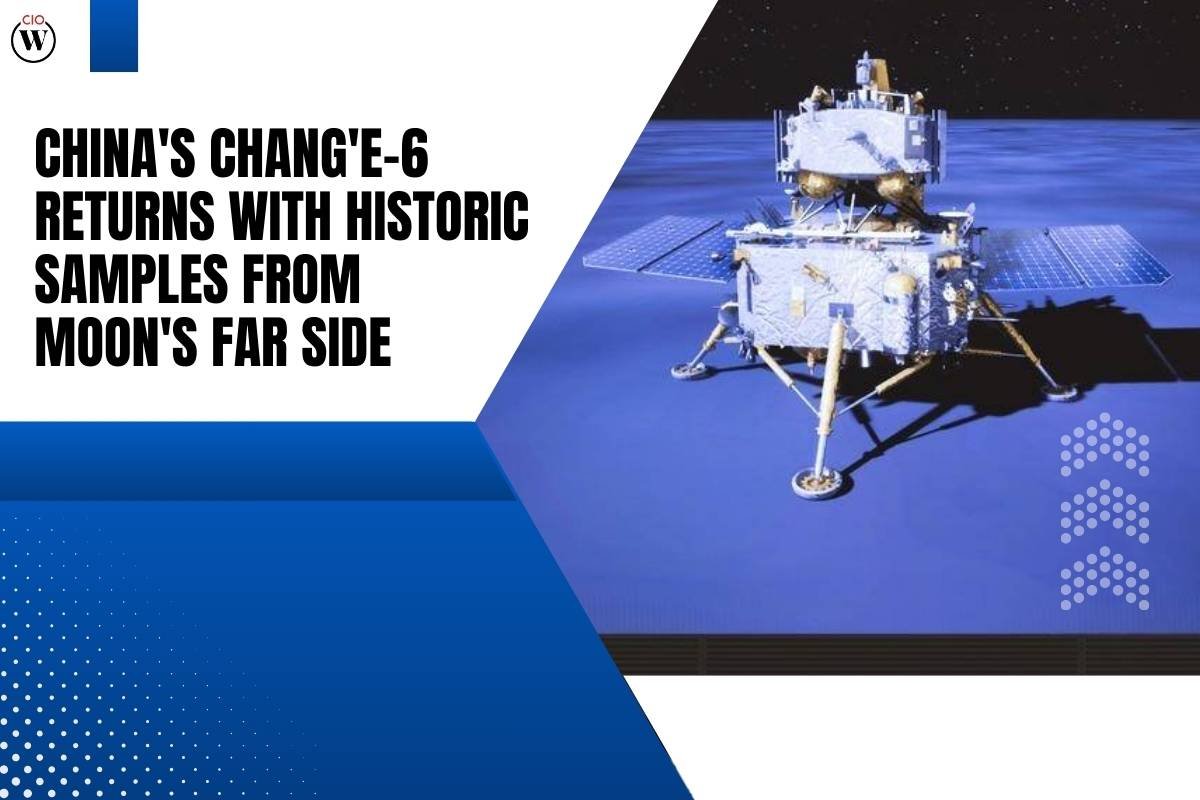Source – Central Western Daily
China’s Chang’e-6 lunar probe has achieved a historic milestone by returning to Earth with precious samples from the Moon’s far side. On Tuesday, the capsule landed in the vast Inner Mongolia desert, marking the culmination of a nearly two-month mission fraught with technical challenges and high expectations. Launched from a space center in early May, Chang’e-6 undertook a daring journey to a crater near the Moon’s south pole, where it conducted crucial scientific operations.
The far side of the Moon, known for its difficult terrain and distant location, poses unique obstacles for exploration. China, having previously landed on this challenging terrain in 2019, reinforced its position as a pioneer in lunar exploration with China’s Chang’e-6’s successful mission. The probe utilized advanced drilling and robotic technologies to collect soil and rock samples, capturing detailed images of the lunar surface and proudly planting the Chinese flag, as depicted by state media.
Scientific Significance and Global Reactions
Scientists worldwide eagerly anticipate the findings from Chang’e-6’s samples, viewing them as potential keys to unlocking fundamental mysteries about planetary formation. The far side of the Moon presents an intriguing scientific puzzle, distinct from its near side, with implications for understanding lunar geology and the broader history of the solar system. Researchers hope these samples will shed light on theories about the Moon’s origins 4.5 billion years ago, including hypotheses about its formation through a collision with an early Earth-like object.
Catherine Heymans, Astronomer Royal for Scotland, expressed excitement over the successful landing, highlighting the geological differences between the Moon’s near and far sides as a significant scientific puzzle awaiting resolution. She emphasized the potential of these samples to provide insights into lunar composition and its relationship to Earth’s early history, posing questions about whether both bodies were once part of a singular celestial entity.
China’s Lunar Ambitions and Future Plans
For China, Chang’e-6’s mission represents not only a scientific triumph but also a strategic advancement in its ambitious space program. President Xi Jinping personally congratulated the mission’s command center, emphasizing the nation’s commitment to exploring deep space and unraveling the universe’s mysteries for the benefit of humanity. Beijing’s substantial investments in space exploration over the past decade aim to bolster its position among global space powers, alongside the United States and Russia.
Looking ahead, China has set ambitious goals, including a crewed mission to the Moon by 2030 and plans for a lunar base near the south pole in the future. These objectives align with international efforts, such as NASA’s Artemis 3 mission, which aims to return astronauts to the Moon by 2026. As competition and collaboration in space exploration intensify, China’s Chang’e-6’s successful return with lunar samples marks a significant achievement for China and a milestone in humanity’s quest to understand the cosmos.
China’s Chang’e-6 mission has not only demonstrated technological prowess but also opened new doors to scientific discovery on the Moon’s far side. With international interest and anticipation surrounding the analysis of these samples, the mission underscores China’s growing influence in space exploration and its commitment to pushing the boundaries of human knowledge in the quest to unravel the mysteries of our solar system and beyond.
Also read: Chang’e-6 Mission Successfully Returns First Samples From The Lunar Far Side









